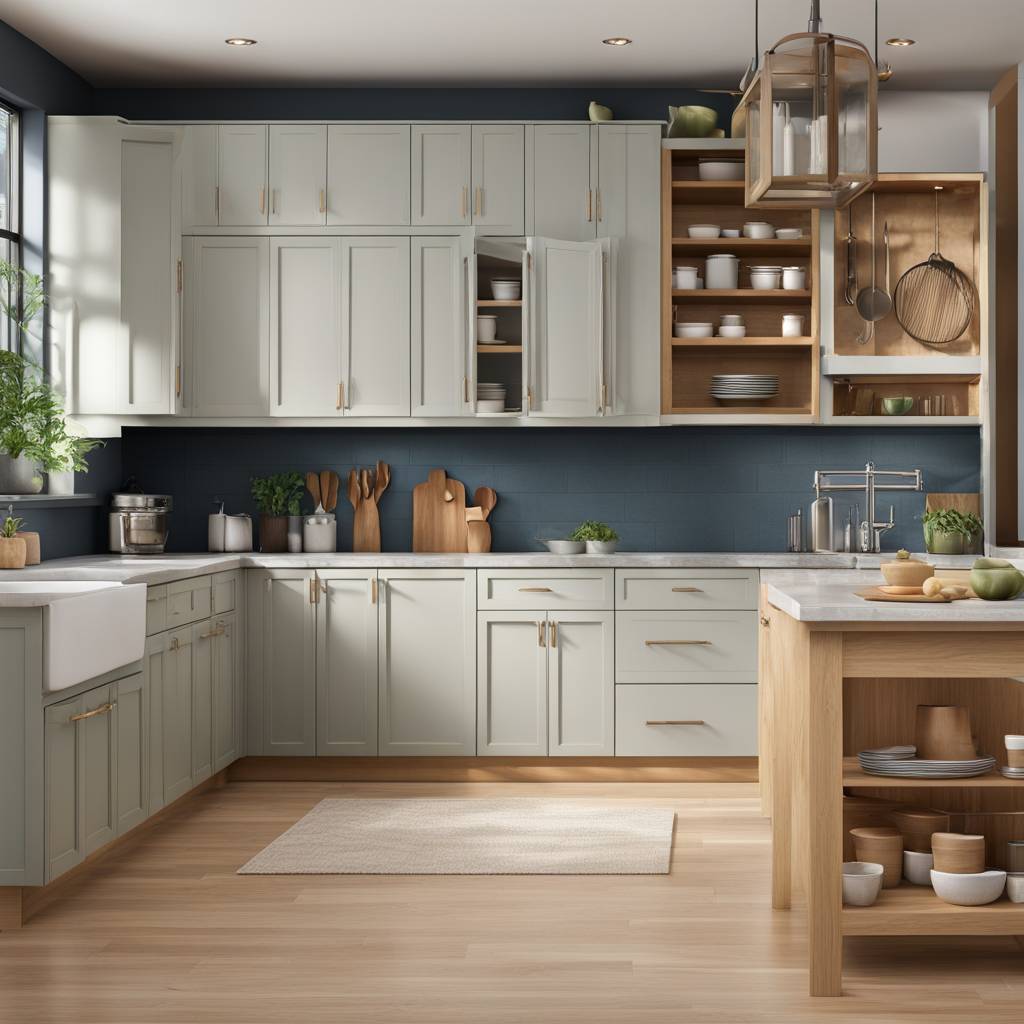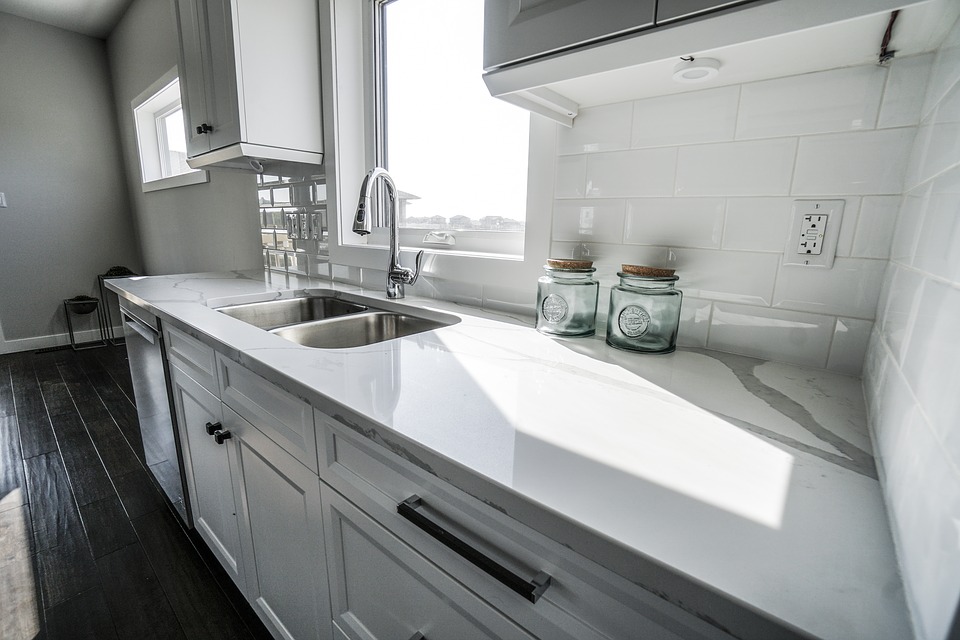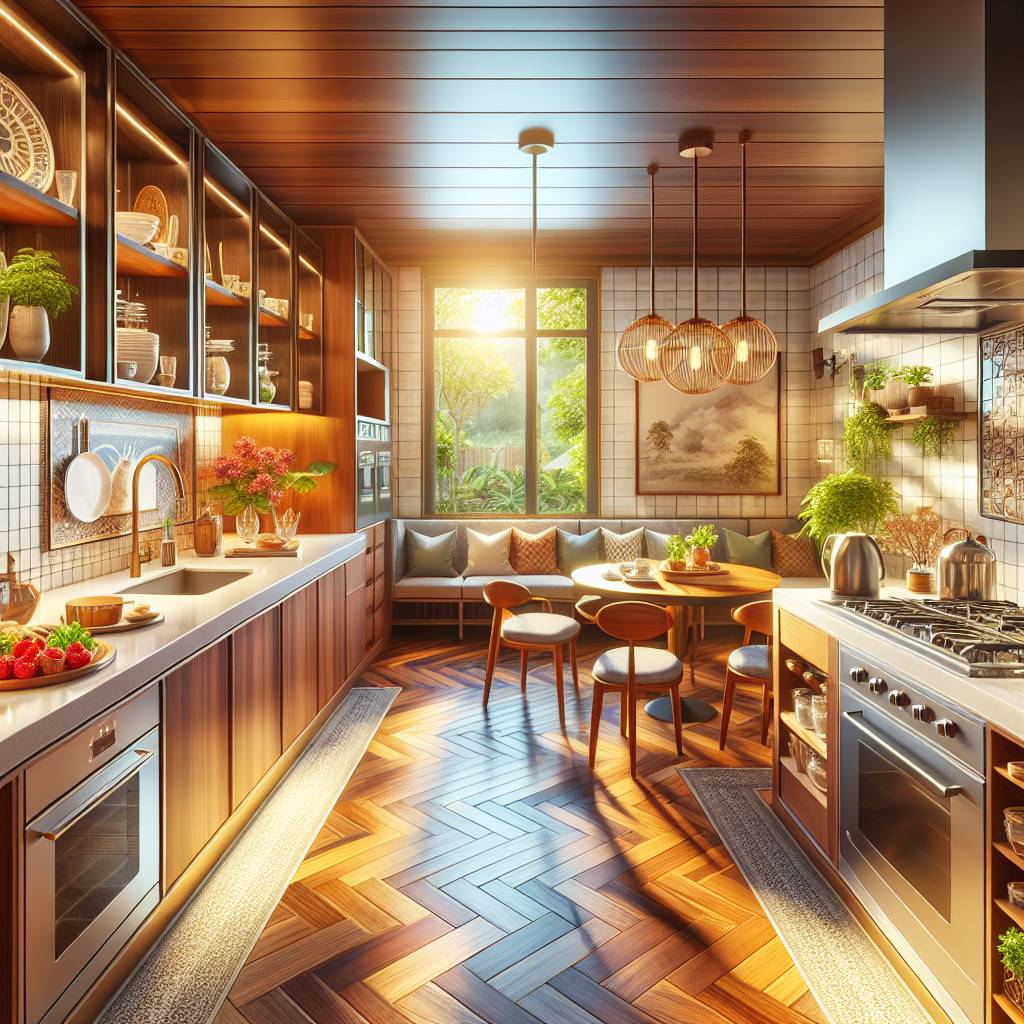Want to upgrade your kitchen without the hassle of constant upkeep? Finding the right cabinet finish can make all the difference. Whether you’re a cooking enthusiast or simply love spending time in your kitchen, low-maintenance cabinet finishes are a game-changer. From sleek laminates to durable acrylics, we’ll explore the top options that not only enhance the aesthetic appeal but also require minimal maintenance. Say goodbye to endless scrubbing and hello to more time enjoying your low maintenance culinary haven.
There’s no one-size-fits-all solution. We’ll delve into different finishes, paints, their unique benefits, and how they can elevate your kitchen space effortlessly. Get ready to discover how these finishes combine style with practicality, making them ideal for any modern home.
Key Takeaways
- Embrace low-maintenance kitchen cabinet finishes to simplify cleaning and upkeep.
- Select cabinet materials like laminate or thermofoil for durability and easy maintenance.
- Choose functional cabinet hardware such as sleek, minimalistic handles for a fuss-free cleaning experience.
- Opt for door styles with flat surfaces and minimal detailing to minimize dust and grime buildup.
- Ensure hygiene-friendly sink options and easy-to-clean countertops and backsplashes for a hassle-free kitchen maintenance routine.
- Select flooring materials that facilitate easy cleaning and maintenance, such as vinyl or ceramic tiles.
Embracing Low-Maintenance Kitchen Cabinet Finishes
The level of maintenance they require is influenced by several key factors. The material’s durability plays a significant role in determining how much care and attention your cabinets will need over time. For instance, hardwoods like oak or maple are known for their robustness, making them less susceptible to wear and tear compared to softer woods.
Moreover, the surface finish of your kitchen cabinets also impacts their ease of cleaning. Smooth finishes such as polished nickel are not only visually appealing but also simpler to wipe down and maintain. On the other hand, textured surfaces or intricate detailing may trap dirt and grime, making cleaning more labor-intensive.
Proper care is essential in extending the lifespan of your kitchen cabinets. Regular dusting and gentle cleaning with mild soap can prevent dirt buildup and preserve the integrity of the finish. By following these simple maintenance practices, you can ensure that your cabinets remain in top condition for years to come.
Selecting the Right Cabinet Materials
Wood Grain Selection
Considering wood grain is crucial. Different wood species offer varying levels of maintenance. For instance, a tighter grain pattern like that of maple or cherry requires less upkeep than oak with its prominent grain. Opting for a tighter grain pattern can make cleaning and upkeep easier, ensuring your cabinets look great with minimal effort.
Certain wood species also have natural properties that make them more resistant to wear and tear, such as cherry’s durability and resistance to dents. By choosing a wood type known for its low-maintenance characteristics, you can ensure your cabinets stay looking their best without extensive care.
Paint vs. Sealed Stain
The choice between paint and sealed stain plays an essential role in determining the maintenance level of your kitchen cabinets’ finish. Opting for paint provides a smooth surface that is easy to clean, making it ideal for busy kitchens where spills are frequent occurrences. On the other hand, sealed stain offers natural beauty while requiring less maintenance due to its ability to hide small scratches or wear over time.
Considering both aesthetics and upkeep preferences is important when deciding between these two options. If you desire an effortlessly clean surface and don’t mind sacrificing some natural appearance, paint may be the way to go; however, if you prioritize maintaining a more natural look while minimizing upkeep efforts, then opting for sealed stain could be the better choice.
Non-Porous Materials
In pursuit of low-maintenance cabinet finishes, prioritizing non-porous materials is key. These surfaces resist moisture and stains effectively compared to porous materials like unfinished wood or certain types of stone which absorb spills easily.
Opting for non-porous materials ensures that cleaning becomes hassle-free since they do not absorb liquids or develop stains over time due to their impermeable nature – perfect for high-use areas like kitchens where spills are common occurrences.
Choosing Functional Cabinet Hardware
Hardware Types
It’s crucial to opt for finishes that are resistant to tarnishing or corrosion. Look for hardware types such as stainless steel, brushed nickel, or matte black finishes. These options are not only durable but also easy to clean.
For instance, stainless steel is a popular choice due to its resistance to rust and corrosion. It requires minimal maintenance and can be easily wiped clean with a damp cloth. Similarly, brushed nickel offers a sleek look while being resistant to fingerprints and water spots, making it an ideal choice for low-maintenance cabinets.
Ensure that the chosen hardware complements the selected cabinet finish. For example, if you have opted for white cabinets with a matte finish, consider pairing them with stainless steel or chrome hardware for a cohesive and contemporary look.
Material Considerations
When considering material options for cabinet hardware, prioritize durability and cleaning ease. Opting for low-maintenance materials can significantly reduce long-term upkeep costs associated with maintaining the appearance of your kitchen cabinets.
For instance, brass is known for its durability and ability to withstand wear and tear over time. Its smooth surface makes it easy to wipe down when cleaning your cabinets. Bronze offers both aesthetic appeal and resilience against tarnishing or discoloration.
It’s essential to choose materials that align with your lifestyle and usage needs. If you have a busy household where the kitchen sees frequent use, selecting robust materials like stainless steel or aluminum can ensure that your cabinet hardware remains in top condition without requiring extensive upkeep.
Optimal Door Styles for Effortless Upkeep
Door Design
The door design plays a crucial role. It directly impacts the ease of cleaning and accessibility to different areas of the cabinets. For minimal upkeep, consider selecting door designs that allow easy reaching of corners and crevices. Designs with intricate details or ornate patterns can accumulate dust and grime, making cleaning more challenging. Instead, opt for sleek and simple door styles that minimize buildup.
For instance, flat-panel or shaker-style doors are excellent choices as they have fewer grooves where dirt can collect. These designs offer a smooth surface that simplifies wiping down cabinets, reducing the time and effort required for cleaning. Choosing doors with rounded edges instead of sharp corners can also make a significant difference in maintenance ease.
Ease of Cleaning
Prioritizing finishes that are effortless to clean is essential when aiming for low-maintenance kitchen cabinet options. Smooth surfaces not only enhance the aesthetic appeal but also simplify the cleaning process by allowing easy removal of stains and spills without much hassle. When considering different finishes, such as painted, stained, or laminated cabinets, opt for those with minimal grooves or intricate details.
For example: A painted finish on kitchen cabinets provides a smooth surface that is relatively easier to wipe clean compared to stained wood due to its non-porous nature. Minimizing grooves or ornate carvings on cabinet doors reduces potential spots where dirt accumulates over time.
Ideal Cabinet Ends and Construction
Construction Quality
High-quality construction is essential for achieving low maintenance in kitchen cabinets. Sturdy construction can withstand the wear and tear of everyday use, reducing the need for frequent repairs or replacements. When investing in new cabinets, prioritize well-built options to ensure long-term low maintenance. Custom cabinets are a great example of high-quality construction that offers durability and longevity.
For instance, custom cabinets are often constructed with precision and attention to detail, using sturdy materials that can endure heavy usage without showing signs of damage. This level of craftsmanship ensures that your cabinets will maintain their integrity over time, minimizing the need for constant upkeep or repairs.
Material Durability
Choosing durable materials for your kitchen cabinet finishes is crucial in minimizing maintenance requirements. Durable materials have the ability to withstand scratches, dents, and other types of damage commonly encountered in busy kitchens. By opting for long-lasting materials such as matching ends made from high-quality wood or laminate, you can significantly reduce the need for frequent maintenance.
For example, selecting sink cabinet finishes crafted from resilient materials like hardwood or stainless steel can enhance their durability and resistance to moisture-related issues common around sinks. These durable finishes not only contribute to a low-maintenance kitchen but also add an aesthetic appeal to your space.
Hygiene-Friendly Sink Options
Material Choices
The sink’s material is crucial. Different materials offer varying levels of maintenance. For instance, stainless steel sinks are durable and resistant to stains and corrosion, making them ideal for low-maintenance kitchens. On the other hand, porcelain sinks are prone to chipping and staining, requiring more upkeep. Consider factors like water resistance and scratch resilience when selecting a sink material that aligns with your low-maintenance goals.
Composite granite sinks are gaining popularity due to their durability and ease of maintenance. These sinks resist scratches, chips, and stains while also being heat-resistant—a perfect fit for a busy kitchen environment where hygiene is paramount.
Sink Design
The design of the sink plays a significant role in its ease of maintenance. Opting for easy-to-clean sink materials such as stainless steel or composite granite simplifies day-to-day cleaning tasks in the kitchen. Smooth, non-porous surfaces prevent grime buildup and make wiping down the sink effortless after each use.
Investing in a well-designed sink that facilitates effortless cleaning can significantly reduce the time spent on maintenance tasks while ensuring optimal hygiene standards in your kitchen space.
Countertops and Backsplashes That Simplify Cleaning
Non-Porous Countertops
Non-porous countertops are the way to go. These surfaces, such as quartz and stainless steel, are a breeze to clean. They don’t absorb liquids or harbor bacteria, making them ideal for busy kitchens. By choosing non-porous materials, you can say goodbye to constant scrubbing and staining worries.
Non-porous countertops like quartz not only simplify cleaning but also enhance kitchen hygiene. Imagine wiping away food splatters without leaving any traces behind. This type of countertop ensures that your cooking space stays pristine with minimal effort. These durable surfaces withstand wear and tear, offering long-term convenience without compromising on style.
Investing in low-maintenance backsplash options further streamlines your cleaning routine. Easy-to-wipe materials like glass or stainless steel make grease and splatter cleanup a quick task. Picture effortlessly removing food splatters from your backsplash after a hearty cooking session – that’s the beauty of opting for hassle-free materials.
Backsplash Materials
Selecting easy-to-clean backsplash materials is essential for reducing maintenance efforts in the kitchen area around your cabinets. When considering options resistant to grease and splatter, you ensure that cleaning up after meal prep becomes less time-consuming and laborious.
Flooring That Facilitates Easy Maintenance
Material Selection
Material selection plays a crucial role. Opting for materials that are durable and easy to clean significantly reduces the effort required for maintaining kitchen cabinets. For instance, materials like laminate, thermofoil, or stainless steel offer excellent durability and are relatively easy to wipe clean. These options strike a balance between aesthetics and practicality, ensuring that your cabinets not only look good but also require minimal upkeep.
Furthermore, considering the impact of material choice on overall maintenance needs is essential. For example, wooden finishes may add warmth and charm to your kitchen but often demand more care due to their susceptibility to scratches and moisture damage. On the other hand, high-pressure laminate surfaces provide an attractive appearance while being resistant to stains and spills—a valuable trait in a busy kitchen environment.
Flooring Textures
Smooth flooring textures play a pivotal role in simplifying cleaning tasks within the kitchen space. When aiming for low-maintenance cabinet finishes, it’s important to consider avoiding textured flooring surfaces that can trap dirt and grime over time. Instead, opt for easy-to-clean flooring options such as vinyl or ceramic tiles with smooth finishes that facilitate hassle-free maintenance routines.
Low-Maintenance Appliance Selections
Appliance Finishes
When choosing appliance finishes for your kitchen, it’s essential to consider their impact on the overall aesthetics. Opting for finishes that are easy to clean can significantly reduce maintenance efforts in the long run. For instance, stainless steel and black slate are popular choices known for their low-maintenance properties. These finishes not only add a modern touch to your kitchen but also require minimal upkeep, making them ideal for busy households.
Investing in durable appliance finishes is crucial when aiming for low maintenance. Some finishes may look appealing initially but could wear out quickly or be prone to smudges and fingerprints, leading to frequent cleaning requirements. Therefore, prioritize durability and ease of cleaning when selecting appliance finishes.
Innovative Features
In addition to the actual finish, innovative features integrated into kitchen appliances can have a significant impact on reducing maintenance needs. Look for appliances with features specifically designed to streamline cleaning tasks. For example, some refrigerators come with smudge-resistant coatings that make wiping away fingerprints effortless, while certain ovens have self-cleaning functions that minimize manual scrubbing.
Smart design elements play a key role in minimizing upkeep requirements associated with kitchen appliances. When shopping for dishwashers or stoves, consider models equipped with innovative designs aimed at simplifying maintenance routines. This could include hidden control panels that are easier to clean or dishwasher interiors featuring adjustable racks that accommodate various dish sizes without requiring extra effort from you.
Design Tips for a Time-Saving Kitchen Layout
Functional Layouts
A low-maintenance kitchen starts with a well-planned layout that simplifies cleaning routines. Consider organizing your storage and appliances to maximize accessibility, making it easier to keep everything clean and tidy. For example, opting for pull-out shelves in cabinets can make reaching items at the back much simpler, reducing the effort required to maintain order.
Balance functionality with low-maintenance considerations by choosing durable materials that are easy to clean. For instance, quartz countertops are not only stylish but also require minimal upkeep compared to porous materials like marble or wood. This ensures that your kitchen remains both functional and easy to maintain.
Lighting Considerations
Good lighting is essential for creating a low-maintenance kitchen as it enhances visibility for thorough cleaning. Properly lit areas help identify dirt and grime, allowing you to address them promptly before they become larger issues. When planning your kitchen design, invest in lighting solutions that support easy maintenance, such as under-cabinet LED lights or pendant lights above work areas.
Consider natural light sources when designing your contemporary kitchen layout. Large windows or strategically placed skylights can flood the space with natural light, making it easier to spot any missed spots during regular cleaning sessions.
Summary
Congratulations on reaching the end of our guide to low-maintenance kitchen cabinet finishes! By now, you’ve learned about the best materials, hardware, and design tips to create a kitchen that’s not only stylish but also easy to maintain. Remember, choosing the right cabinet finishes can save you time and effort in the long run, allowing you to spend more time enjoying your kitchen rather than constantly cleaning and maintaining it.
Now armed with this knowledge, it’s time to put it into action. Consider evaluating your current kitchen setup and identifying areas where you can incorporate these low-maintenance principles. Whether it’s updating your cabinet finishes, selecting functional hardware, or rethinking your layout, small changes can make a big difference in creating a hassle-free kitchen that suits your lifestyle. Here’s to effortless upkeep and more time for the things you love!
Frequently Asked Questions
What are the best low-maintenance kitchen cabinet finishes?
Low-maintenance kitchen cabinet finishes include laminate, thermofoil, and acrylic. These materials are durable, easy to clean, and resistant to moisture and stains.
How can I choose functional cabinet hardware for low maintenance?
Opt for sleek and simple hardware designs made of materials like stainless steel or brushed nickel. These options are not only easy to clean but also resistant to corrosion and wear.
What door styles require minimal upkeep in a kitchen?
Choose flat-panel or shaker-style doors as they have fewer crevices where dirt can accumulate. They are easier to wipe down and maintain over time compared to intricate door styles.
Which sink options are most hygiene-friendly for a low-maintenance kitchen?
Stainless steel sinks with undermount installation provide a seamless surface that is easy to clean and maintain. Quartz composite sinks offer durability and resistance against stains and scratches.
How do I select low-maintenance appliances for my kitchen?
Look for appliances with smudge-proof finishes that resist fingerprints, as well as self-cleaning features. Stainless steel appliances can also be an excellent choice due to their ease of cleaning and durability.






